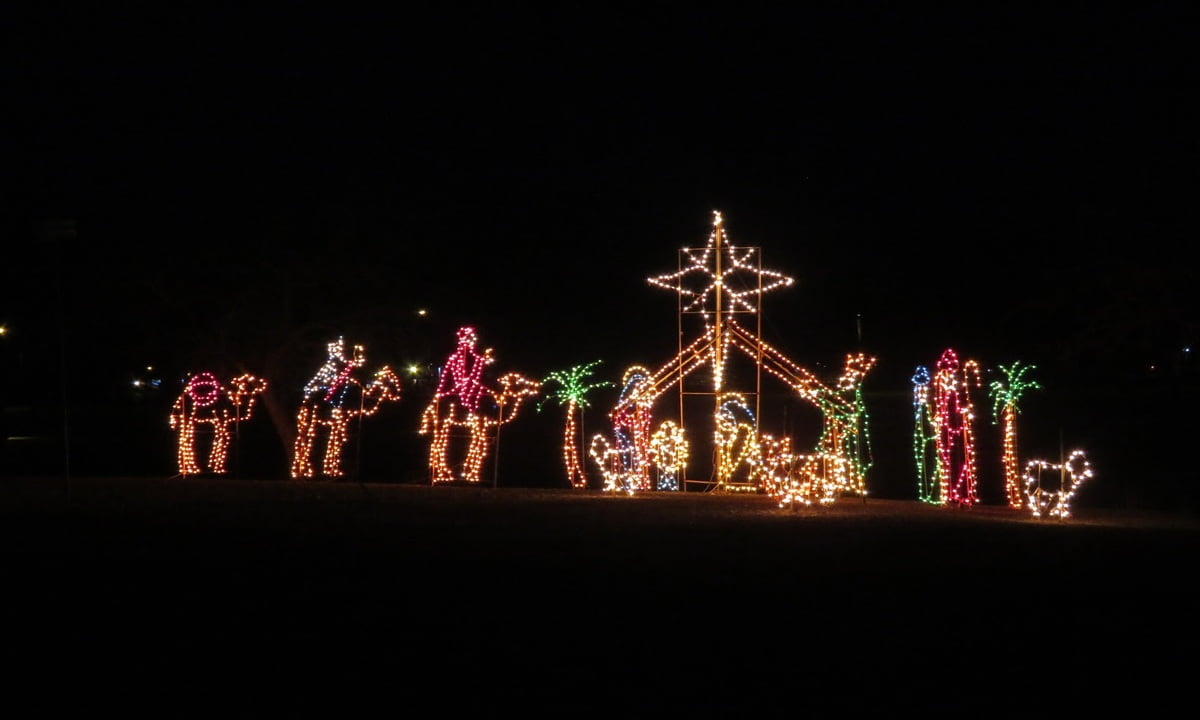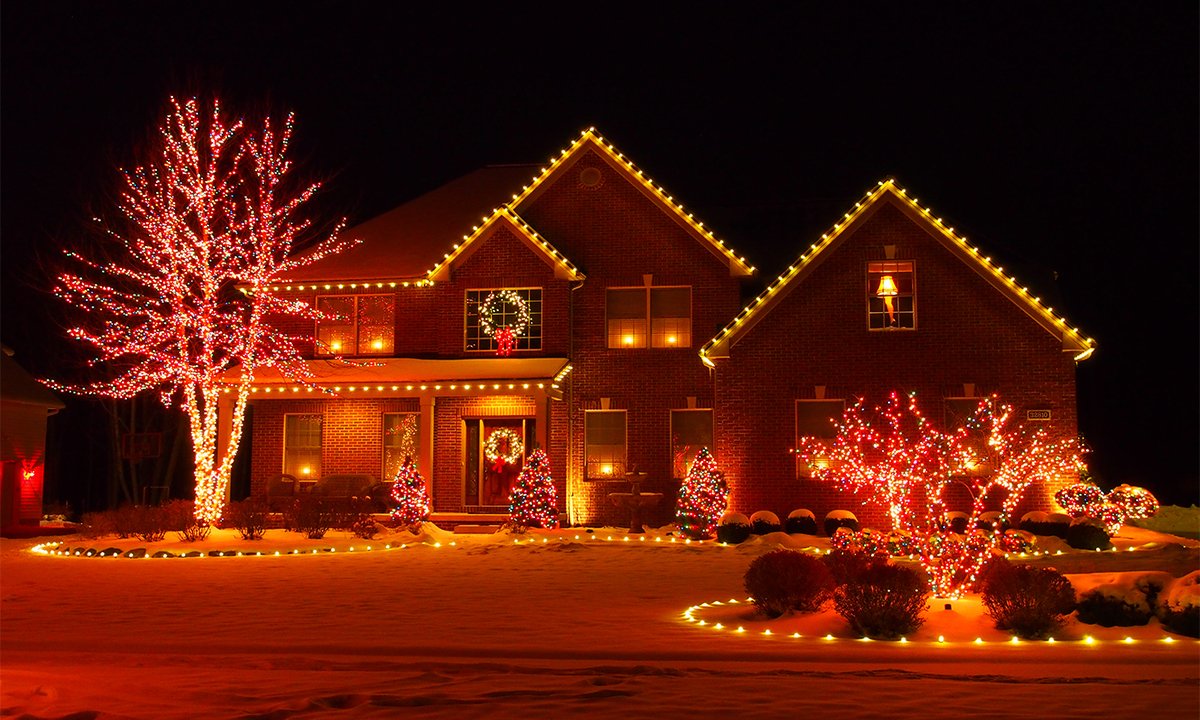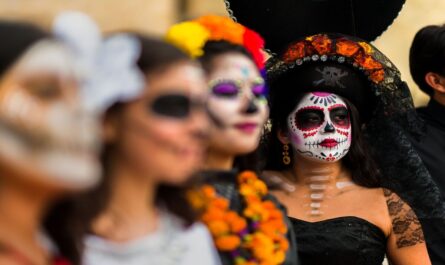The Christian tradition celebrates the birth of Jesus Christ joyously on December 25 during Christmas Day. Beyond its religious roots, Christmas has developed into a worldwide cultural celebration characterized by various customs. Friends and families come together to share festive meals, create lasting memories and exchange gifts. The holiday is synonymous with colorful decorations, from decorate Christmas trees to twinkling lights.
Santa Claus, who embodies the spirit of generosity, is a popular figure in many cultures who delivers gifts to children. Special music and Christmas carols add a melodic note to the season and enhance the feeling of merriment. Christmas is a time of reflection, whether through the warmth of gathering, the exchange of gifts, or the delights of feast. This day love and goodwill and promote a sense of unity and joy among people worldwide. Here is the full article about Christmas day and its history, origin and celebration:
Etymology
The term “Christmas” goes back to the Old English expressions “Cristes mæsse”,” which means “Christ’s mass” or “the mass of Christ”. The word “Christ” is derived from the Greek “Khristos”,” which means “anointed one” or “Messiah”. The term “mass” refers to a religious service or celebration, especially in a Christian context. Over time, the Old English term “Cristes mæsse” evolved into the Middle English term “Cristemasse” and finally into the modern English word “Christmas”. The feast of the birth of Jesus Christ has been celebrated for centuries, with the term “Christmas” entering common usage in the Middle Ages.
The etymology of the word “Christmas” reflects its religious origins. It emphasizes its connection with the Christian tradition of commemorating the birth of Jesus through a special service or mass. The word has changed linguistically over the centuries, reflecting its cultural significance and the evolution of the festival.

History
The history of Christmas Day can be traced back to the Christian tradition of commemorating the birth of Jesus Christ. Although the Bible does not give the exact date of this event. In due course, people chose December 25 to celebrate the birth of Christ, possibly influenced by other winter solstice and Roman festival of Saturnalia celebration. Over the centuries, Christmas evolved to incorporate various cultural and pagan traditions. Festive celebrations emerged in medieval Europe, and the Victorian era contributed to a revival of Christmas traditions. The festival survived periods of Puritan opposition, but experienced a resurgence and became increasingly commercialized in the 20th century. Today, Christmas is a worldwide phenomenon characterized by religious celebrations, gift-giving, family gatherings and a variety of customs. The Christmas festivals reflect the different cultures that celebrate the vacation.
Symbols
A series of symbols adorns Christmas Day, reflecting the essence of the Christmas season. Santa Claus in his iconic red suit embodies the spirit of giving and generosity. While the Christmas tree decorated with lights and ornaments stands as a symbol of festive joy. The nativity scene, which depicts the biblical account of the birth of Jesus, remains a poignant symbol of the religious significance of Christmas. Decorations such as candles, mistletoe and wreath contribute to inviting and a warm atmosphere and emphasize the themes of light, romance and hope.
Christmas carols with their timeless melodies ring out during the festive season and create a feeling of cheerfulness. The exchange of gifts reflects the spirit of kindness and sharing, inspired by the biblical story of the Magi. Whether Christmas tree trunks, snowmen and snowflakes, these symbols together form a festive and cultural narrative that makes Christmas a time of celebration, unity and reflection around the world.

Origin of Christmas
The origin of Christmas goes back to the Christian tradition that commemorates the birth of Jesus Christ. The exact date of Jesus’ birth is not given in the Bible, and the choice of December 25 as the feast day has cultural and historical significance. Some scholars suggest that early Christians chose this date to align with the Roman festival Saturnalia, a time of gift-giving and feasting around the winter solstice. Over the centuries, Christmas developed into a complex web of religious and secular celebration through the adoption of various cultural practices and customs. The roots of the festival in Christian theology are interwoven with elements of ancient and medieval winter festivals. Today Christmas is a multidimensional and globally celebrated event.
Origin of Christmas Tree
Ancient pagan traditions trace back the origin of the Christmas tree. It has developed over time into a central symbol of Christmas. Winter festivals recovered evergreen trees as symbols of fertility and life in pre-Christian Europe. As Christianity spread, the tradition of bringing greenery into homes continued. Medieval mystery plays depicting biblical stories often used trees in the Middle Ages. The connection between Christmas and evergreen trees became even clearer in 16th century Germany, when devout Christians decorated trees with wafers, candles and apples to symbolize the Garden of Eden. The practice gained popularity and spread widely in the 19th century. Queen Victoria and Prince Albert primarily popularized the Christmas tree in England. Later, German immigrants brought the custom to the United States, making the Christmas tree a cherished symbol of the holiday season worldwide.

Date of Christmas
People celebrate Christmas every year on December 25. The Christian tradition commemorates the birth of Jesus Christ on this day. Early Christian leaders chose December 25 to bring it in line with existing pagan festivals and celebrations and to ease people’s transition to the new Christian celebrations. Many Christian denominations generally accept and traditionally celebrate Christmas on December 25 as a holiday in many countries around the world.
Celebration
People around the world celebrate Christmas Day with positivity and joy, coming together to commemorate the birth of Jesus Christ. Friends and families come together to enjoy special meals, exchange gifts and create beautiful memories. Festive decorations mark the day, including Christmas trees decorated with ornaments and lights and homes lit up with twinkling lights. Many celebrate with attending midnight mass, church services or other religious services. The exchange of gifts inspired by the biblical story of the Magi emphasizes the spirit of giving. Christmas carols and music add a melodic touch to the atmosphere and promote a sense of joy and unity. Whether through unique cultural practices or traditional customs, Christmas Day remains a time of gratitude, reflection and celebration of love and goodwill in diverse communities worldwide.

Controversies
Controversies around Christmas often revolve around issues of inclusivity, cultural sensitivity, secular perspectives and the intersection of religious. In diverse and multicultural societies, debates arise about the appropriate recognition and celebration of Christmas in school, workplace and public spaces. Some argue that the emphasis on Christian traditions at this festival could exclude people of other faiths or from non-religious backgrounds. Furthermore, the commercialization of Christmas, characterized by materialism and excessive consumerism, is criticized for overshadowing the communal and spiritual aspects of the holiday. Debates regarding the secularization and cultural appropriation of Christmas also contribute to the controversy. As some argue that the festival is more about celebration and shopping than its religious origins. Negotiating this complex dynamic remains an ongoing challenge as societies strive to find a balance that respects different faiths. This ensures that the Christmas season is accessible to all.
Christmas Celebrations Around the World
People across the world celebrate Christmas with various traditions and customs reflecting the religious diversity and cultural richness of different regions. Here are some notable Christmas celebrations from different parts of the world:
United States:
• In the US, people characterize Christmas with elaborate lights, festive decoration, and gift-giving.
• Many communities hold parades, and the lighting of the National Christmas Tree in Washington, D.C., is a major event.United Kingdom:
• People in the UK celebrate the festival with festive firecrackers, have a traditional Christmas dinner, and listen to the Queen’s Christmas message.
• Carol singing is a popular activity and towns often decorate themselves with Christmas markets and lights.Germany:
• German Christmas markets are famous for their traditional arts, festive atmosphere, seasonal food and crafts.
• Christmas Eve and advent calendars are important parts of the festivities.Italy:
• Italians celebrate Christmas Eve with a feast known as La Vigilia.
• Visitors from all over the world are attracted to the Vatican, where they hold midnight mass in Rome.France:
• In France, people celebrate the feast of St. Nicholas on December 6 and they serve festive meals on Christmas Eve.
• Nativity scenes are a common decoration.Mexico:
• In Mexico, Las Posadas recreates Joseph and Mary search for an inn with parties and parades.
• The festivities extend until January 6, when people celebrate the Day of the Three Wise Men.Japan:
• Christmas is not a religious holiday in Japan, but is celebrated with decorations, gift-giving and lights.
• Fried chicken, especially from KFC, has become a popular Christmas food.Australia:
• Christmas in Australia falls in the southern hemisphere summer, so outdoor activities and barbecues are common.
• Many cities hold “Carols by Candlelight” events.Brazil:
• Brazilians celebrate Christmas with festive decoration, nativity play and fireworks.
• The city of Gramado is known for its elaborate Christmas displays.India:
• In India, Christians celebrate with a midnight mass, the exchange of gifts and festive meals.
• People from different religious backgrounds often take part in the celebrations, characterizing Christmas with a sense of unity.

Conclusion
People across religions unite to celebrate Christmas Day, fostering a spirit of joy, love, and generosity. The day, rooted in Christian tradition as a commemoration of the birth of Jesus Christ, has evolved over the centuries, giving rise to a variety of symbols and customs that contribute to its rich diversity. Friends and families come together to share festive meals, exchange gifts and participate in traditions that vary from region to region. The universal themes of compassion, giving and togetherness permeate the emphasize and celebrations the importance of connection and kindness.





